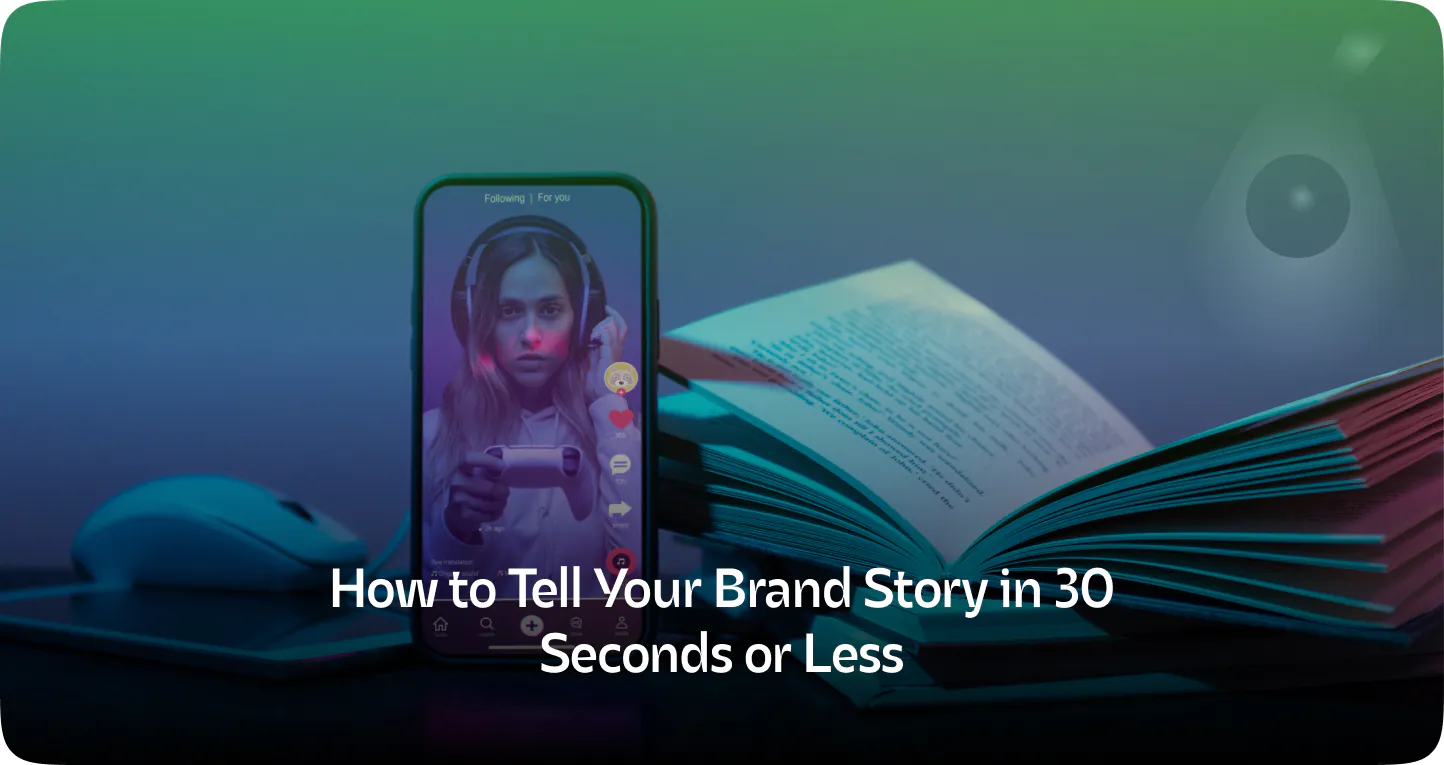The craft of storytelling is crucial in today’s attention-driven space; but, time is limited. In establishing a lasting first impression, one has but a few seconds. A solid brand narrative foundation is therefore vital. Whether you’re presenting the elevator pitch at a social gathering, writing your homepage content, or proposing to an investor.
The story you tell has to be concise yet effective. Your audience needs clarity, a connection, and a cause to care, not an exhaustive history of your business. You may convey your essence in thirty seconds or less while being genuine, convincing, and unforgettable by using a well-defined and tested structure.
The 5-Part Brand Story Framework You Can Use Today
Here’s a concise and powerful structure that will help you master building a brand story in just 30 seconds:
- The Hook (5 seconds)
- The Origin (5–7 seconds)
- The Mission (5–7 seconds)
- The Impact (7–10 seconds)
- The Future (3–5 seconds)
With this brand story framework, you can create clarity in the chaos and connect fast.
Why You Only Get Thirty Seconds to Respond
The attention spans of people are decreasing at a rate that is quicker than ever before in a society that is dominated by social media and constant scrolling. At this point in time, people consume content in micro-moments, and the message that your business conveys is competing with hundreds of others every single minute.
It only takes a few seconds for the typical individual to establish an opinion about a business. If the story you tell does not immediately engage with them, they will continue scrolling and not even notice you or your brand. It is not about taking shortcuts when you are trying to tell your tale in thirty seconds; rather, it is about condensing your identity into something that may be easily understood and remembered.
Amazing Brand Stories That Nail the 30-Second Pitch
Companies that are considered to be among the most iconic in the world have perfected the 30-second brand pitch. As an example, Warby Parker makes it very obvious that their aim is to deliver reasonably priced designer eyeglasses by eliminating the need for a middleman.
This is a narrative that is not only simple to comprehend but also impossible to forget. With just one statement, Airbnb manages to encapsulate the heart of their business by describing themselves as a platform that facilitates genuine travel experiences with local hosts.
Not because they are too comprehensive, but rather because they concentrate on human needs, utilize straightforward language, and speak to the truth of emotions, these incredible brand tales are successful. The brand will explain what they do, why it is important, and how they are different from other brands in a few concise words that are carefully selected in each instance.
Why Creating a Brand Story Is More Than Just Marketing
Creating a story for your company is more than just using creative marketing. Anchoring your identity is essential in order to ensure that all parties involved, including workers, customers, and investors, are able to comprehend the values that your brand represents.
Spreadsheets and plans are never able to personalize your brand in the same way that a clear story can when it comes to aligning internal teams, driving consistency across touchpoints, and humanizing your brand. Your brand’s narrative, when told well, may become the emotional engine that creates belief, loyalty, and advocacy among your target audience.
Building Your Brand Story for Different Platforms
It is possible that the content of your brand narrative is continuous; nevertheless, the manner in which you deliver it should change greatly depending on the platform and the audience.
For example, if you want to create your reputation on LinkedIn, you could want to showcase your founder story and thought leadership. Your framework will function as the spine regardless of the channel; however, the narrative skin should be able to bend in accordance with the framework.
Typical Errors Made When Telling the Story of a Brand
Many companies, although having the greatest of intentions, make mistakes when they are trying to build their story. One of the most typical errors is the use of language that is heavy on jargon and is more likely to turn off people than to entice them.
One more is putting an excessive amount of emphasis on the product rather than the people that it serves. Numerous businesses also fall into the trap of rambling, which involves trying to jam in an excessive amount of information and ultimately resulting in a message that is watered down.
What You Need to Know to Improve and Perfect Your 30-Second Story
Not only is the process of crafting your tale simply the beginning, but the magic occurs when you refine it. On a frequent basis, you should practice your 30-second pitch, both on paper and out loud.
Create a recording of yourself, make adjustments to the wording, and assess the results with a variety of audiences. You may use A/B testing on digital platforms to see which versions of your narratives generate more interaction, conversions, or shares so that you can improve them.
Develop adaptable narrative structures that are depending on the use case: one for investors, another for consumers, and a third for helping teams align their goals.
A Few Closing Thoughts
Your brand narrative is what sets you apart from the competition in a world that is becoming more and more commoditized. People pick you over someone else, remain loyal to you throughout time, and advocate for you even when you are not there in the room because of this since it is the reason.
The brand narrative framework provides you with a strategic edge since it enables you to condense complexity into connection and to transform ambiguous messages into a distinguishable identity. Telling your narrative in thirty seconds or fewer is an art that you should strive to perfect, regardless of whether you are attempting to reconnect with your audience, introduce a new product, or pivot your business.
Your narrative, when told well, does more than just explain what you do; it also convinces people to believe in the reasons behind what you do.
FAQS
A public relations strategy outlines how a brand communicates with its audience to shape perception and build relationships. It involves media outreach, storytelling, and reputation management.
Strategic PR aligns communication efforts with business goals, ensuring every message enhances credibility, visibility, and trust.
A PR strategy helps maintain brand image, manage crises, and create consistent messaging that builds long-term brand value.
A PR strategist crafts and executes communication plans to promote and protect a brand’s reputation across media and public channels.












